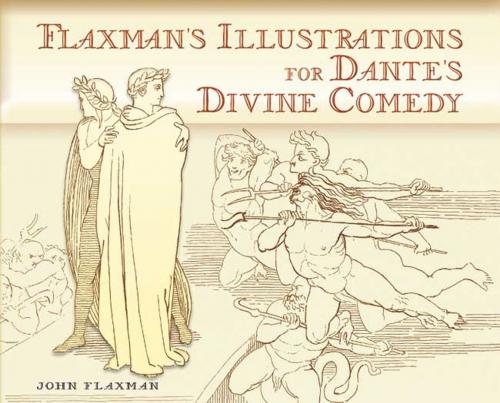Flaxman's Illustrations for Dante's Divine Comedy
Nonfiction, Art & Architecture, General Art, Individual Artist, Artists, Architects & Photographers| Author: | John Flaxman | ISBN: | 9780486157009 |
| Publisher: | Dover Publications | Publication: | February 20, 2013 |
| Imprint: | Dover Publications | Language: | English |
| Author: | John Flaxman |
| ISBN: | 9780486157009 |
| Publisher: | Dover Publications |
| Publication: | February 20, 2013 |
| Imprint: | Dover Publications |
| Language: | English |
Since its creation at the beginning of the fourteenth century, Dante's Divine Comedy—a masterpiece of European literature—has moved legendary artists such as William Blake and Gustave Doré to illustrate the famed poem. John Flaxman, English sculptor, draughtsman, and renowned Wedgwood designer, was no exception. Commissioned at the end of the eighteenth century by famed art collector and author Thomas Hope, Flaxman's 110 illustrations of the Divine Comedy are known as his greatest achievement. Deceptively simple, awash in pathos, and recalling antique imagery in a classically Greek style, they themselves became an inspiration for such artists as Goya and Ingres, and were used as an academic source for nineteenth-century art students.
This magnificent edition of Flaxman's Illustrations for Dante's Divine Comedy includes the complete series of drawings created by Flaxman for all 99 cantos of the literary masterwork. A glorious collection of lively outlines that captures the very spirit of Dante's poem, it is an essential addition to the bookshelves of art, literature, and history enthusiasts. Captions are included from the Henry Wadsworth Longfellow translation of the original text.
Since its creation at the beginning of the fourteenth century, Dante's Divine Comedy—a masterpiece of European literature—has moved legendary artists such as William Blake and Gustave Doré to illustrate the famed poem. John Flaxman, English sculptor, draughtsman, and renowned Wedgwood designer, was no exception. Commissioned at the end of the eighteenth century by famed art collector and author Thomas Hope, Flaxman's 110 illustrations of the Divine Comedy are known as his greatest achievement. Deceptively simple, awash in pathos, and recalling antique imagery in a classically Greek style, they themselves became an inspiration for such artists as Goya and Ingres, and were used as an academic source for nineteenth-century art students.
This magnificent edition of Flaxman's Illustrations for Dante's Divine Comedy includes the complete series of drawings created by Flaxman for all 99 cantos of the literary masterwork. A glorious collection of lively outlines that captures the very spirit of Dante's poem, it is an essential addition to the bookshelves of art, literature, and history enthusiasts. Captions are included from the Henry Wadsworth Longfellow translation of the original text.















